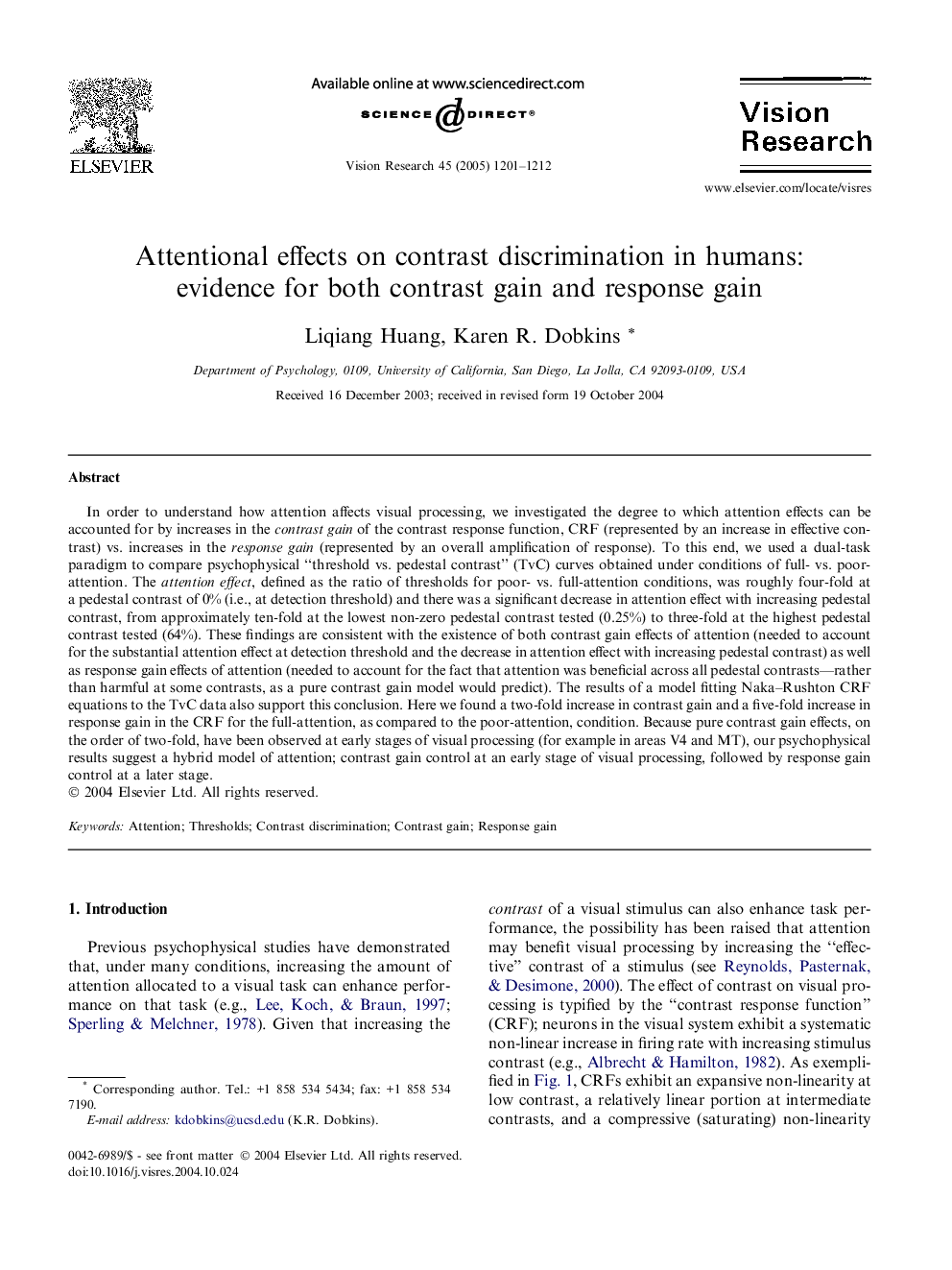| Article ID | Journal | Published Year | Pages | File Type |
|---|---|---|---|---|
| 9348643 | Vision Research | 2005 | 12 Pages |
Abstract
In order to understand how attention affects visual processing, we investigated the degree to which attention effects can be accounted for by increases in the contrast gain of the contrast response function, CRF (represented by an increase in effective contrast) vs. increases in the response gain (represented by an overall amplification of response). To this end, we used a dual-task paradigm to compare psychophysical “threshold vs. pedestal contrast” (TvC) curves obtained under conditions of full- vs. poor-attention. The attention effect, defined as the ratio of thresholds for poor- vs. full-attention conditions, was roughly four-fold at a pedestal contrast of 0% (i.e., at detection threshold) and there was a significant decrease in attention effect with increasing pedestal contrast, from approximately ten-fold at the lowest non-zero pedestal contrast tested (0.25%) to three-fold at the highest pedestal contrast tested (64%). These findings are consistent with the existence of both contrast gain effects of attention (needed to account for the substantial attention effect at detection threshold and the decrease in attention effect with increasing pedestal contrast) as well as response gain effects of attention (needed to account for the fact that attention was beneficial across all pedestal contrasts-rather than harmful at some contrasts, as a pure contrast gain model would predict). The results of a model fitting Naka-Rushton CRF equations to the TvC data also support this conclusion. Here we found a two-fold increase in contrast gain and a five-fold increase in response gain in the CRF for the full-attention, as compared to the poor-attention, condition. Because pure contrast gain effects, on the order of two-fold, have been observed at early stages of visual processing (for example in areas V4 and MT), our psychophysical results suggest a hybrid model of attention; contrast gain control at an early stage of visual processing, followed by response gain control at a later stage.
Related Topics
Life Sciences
Neuroscience
Sensory Systems
Authors
Liqiang Huang, Karen R. Dobkins,
